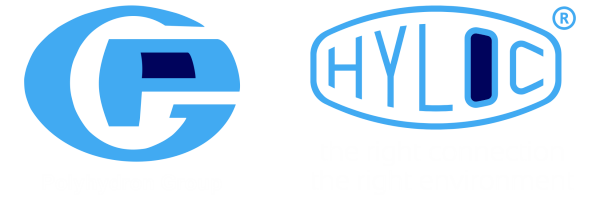In the manufacturing of hydraulic products, electroplating plays a crucial role in enhancing both the performance and durability of the components. Among the various manufacturing processes that contribute to the quality and longevity of hydraulic products, electroplating stands out as a key technique. This blog post delves into the significant role that electroplating plays in the manufacturing of hydraulic components, exploring its benefits, applications, and impact on the industry.
Understanding Electroplating
Before we dive into its specific applications in hydraulic product manufacturing, it’s essential to understand what electroplating is. Electroplating is an electrochemical process that deposits a thin layer of metal onto the surface of another metal object. This process involves immersing the object to be plated (the cathode) and a piece of the plating metal (the anode) in an electrolyte solution. When an electric current is passed through the solution, metal ions from the anode are dissolved and deposited onto the cathode, creating a uniform coating.
In the context of hydraulic components, common plating metals include zinc, nickel, chrome, and various alloys like zinc-nickel. The choice of plating metal depends on the specific requirements of the hydraulic component and its intended application.
Key Benefits of Electroplating in Hydraulic Products
- Enhanced Corrosion Resistance
One of the primary reasons for employing electroplating in hydraulic product manufacturing is to improve corrosion resistance. Hydraulic systems are often exposed to harsh environments, including moisture, chemicals, and varying temperatures. These conditions can rapidly degrade unprotected metal surfaces, leading to rust and corrosion.
Electroplating provides a protective barrier that significantly enhances the component’s ability to withstand corrosive elements. For instance, zinc plating is widely used for its sacrificial protection properties. In the presence of corrosive agents, the zinc coating corrodes preferentially, protecting the underlying base metal. Zinc-nickel alloy plating takes this a step further, offering up to five times the corrosion resistance of standard zinc plating.
This improved corrosion resistance translates to extended component life, reduced maintenance requirements, and enhanced reliability of the hydraulic system as a whole
.
- Increased Wear Resistance
Hydraulic components are subject to constant movement and friction, which can lead to wear over time. Electroplating can significantly enhance the surface hardness of these components, making them more resistant to wear and abrasion.
For example, hard chrome plating is often used on hydraulic cylinder rods and pistons. The extremely hard and smooth surface provided by chrome plating reduces friction, improves wear resistance, and extends the life of these critical components. Similarly, nickel plating can provide excellent wear resistance for components like valves and pumps that experience frequent contact and movement.
- Improved Performance and Efficiency
The smooth and uniform surface created by electroplating contributes to improved performance of hydraulic components. This smooth finish reduces friction between moving parts, leading to more efficient operation and less energy loss due to heat generation.
Moreover, the precise nature of electroplating allows for tight tolerances to be maintained. This is particularly important in hydraulic systems where precise fits and clearances are crucial for optimal performance. The uniform coating ensures that components like pistons and valves maintain their designed clearances, contributing to the overall efficiency and reliability of the hydraulic system.
- Enhanced Sealing Capabilities
In hydraulic systems, maintaining proper sealing is critical to prevent leaks and maintain pressure. Electroplated surfaces, with their smooth and uniform finish, provide better sealing capabilities compared to uncoated surfaces. This is particularly important for components like fittings, connectors, and valve bodies where leak-free connections are essential.
The improved sealing not only prevents fluid loss but also helps maintain system pressure, ensuring that the hydraulic system operates at peak efficiency.
- Aesthetic Appeal and Quality Perception
While the functional benefits of electroplating are paramount, the aesthetic improvements it brings should not be overlooked. Electroplated components often have a shiny, polished appearance that signifies quality and precision. In industries where the appearance of machinery and equipment matters, this can contribute to a positive perception of the brand and its products.
Furthermore, the uniform appearance of electroplated components can serve as a visual indicator of quality control in manufacturing processes.
- Cost-Effectiveness in the Long Run
Although electroplating adds to the initial manufacturing cost of hydraulic components, it proves to be a cost-effective solution in the long term. The enhanced durability, reduced maintenance requirements, and extended component life all contribute to significant cost savings over the lifecycle of the hydraulic system.
By reducing the frequency of component replacements and system downtime, electroplated hydraulic products offer better value and lower total cost of ownership for end-users.
Applications in Hydraulic Product Manufacturing
Electroplating finds wide application across various hydraulic components:
- Tube Fittings and Connectors: Often plated with zinc or zinc-nickel for corrosion resistance and improved sealing.
- Hydraulic Cylinders: Chrome plating on rods and internal surfaces for wear resistance and smooth operation.
- Valves and Valve Bodies: Nickel or chrome plating for wear resistance and improved performance.
- Pump Components: Various plating options to enhance durability and efficiency.
- Flanges and Adapters: Zinc plating for corrosion protection and aesthetics.
Challenges and Considerations
While electroplating offers numerous benefits, it’s important to consider some challenges and considerations:
- Environmental Concerns: Traditional electroplating processes can involve hazardous chemicals. Modern plating facilities must adhere to strict environmental regulations and employ sustainable practices.
- Quality Control: Ensuring uniform plating thickness and adhesion requires precise control of the electroplating process.
- Material Compatibility: Not all base metals are suitable for all types of plating. Proper selection of plating material based on the base metal and application is crucial.
Future Trends
The field of electroplating continues to evolve, with ongoing research into more environmentally friendly processes and advanced alloy coatings. Developments in nanotechnology are also opening up possibilities for even more durable and efficient coatings for hydraulic components.
Conclusion
Electroplating plays a vital role in the manufacturing of high-quality hydraulic products. By enhancing corrosion and wear resistance, improving performance, and contributing to cost-effectiveness, electroplating significantly impacts the durability, reliability, and efficiency of hydraulic systems.
As the demands on hydraulic systems continue to grow across various industries, the importance of electroplating in manufacturing processes is likely to increase. Manufacturers who leverage this technology effectively can gain a competitive edge by offering products that meet the highest standards of performance and longevity.
For hydraulic system designers, engineers, and end-users, understanding the role and benefits of electroplating can inform better decision-making when selecting components and evaluating the quality of hydraulic products. As the industry continues to evolve, electroplating will undoubtedly remain a crucial element in the production of high-performance hydraulic components.


